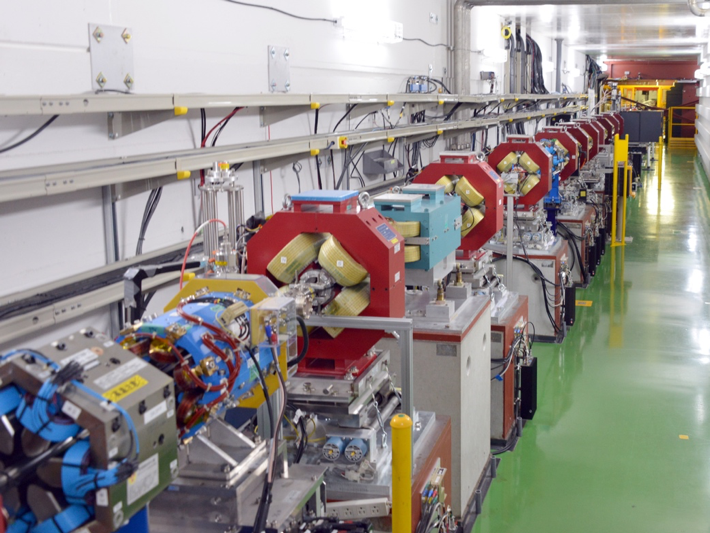After two years without having overseas collaborator participation due to COVID19, it is again possible for overseas collaborators to contribute to the KEK Accelerator Test Facility 2 (ATF2) experimental programme. This unique facility is designed as an energy-scaled version of a Final Focus Section (FFS) of Linear Collider such as the International Linear Collider (ILC) or the Compact Linear Collider (CLIC).
The facility aims to demonstrate both the effectiveness of the local chromaticity correction scheme for achieving an Interaction Point (IP) vertical beam size as small as 37 nm, and the feasibility of beam orbit stabilization at the nanometer level. At its focal point, the 37 nm vertical beam size is technically equivalent to the 7.7 nm beam size for ILC at 250 GeV with the nominal ATF2 optics and to the 2.9 nm for CLIC 380 GeV with the ultra-low ATF2 optics.
Over the past years, unique and outstanding results have been achieved. The effectiveness of the local chromaticity correction scheme was successfully demonstrated, as was the potential or direct beam orbit stabilization at the nanometer level. To date, an electron vertical beam size as small as 41 nm, essentially satisfying the ATF2 design goal, and stabilization with feedback latency of 133 ns (much smaller than the ILC design bunch spacing) have also been achieved. This said, the vertical beam size has been demonstrated only with a bunch population of approximately 10% of the nominal value of 1010 electrons. Given the small beam sizes and the presence of highly-nonlinear elements, the optics is very sensible to imperfections, such as wakefields, magnet misalignments and jitter. In particular, wakefield effects are causing the ATF2 vertical beam size growth with the beam intensity, as shown in recent studies.

It is recognised that the ATF/ATF2 achievements have already verified the challenging technical feasibility of the FFS of Linear Colliders. The main future objective of ATF2 is to pursue the necessary R&D to maximize the luminosity potential of such linear colliders. In particular, the FFS design must be assessed from the point of view of beam dynamics, choice of technology and hardware, as well as long-term stability.
During the last two years, there have been numerous hardware changes and improvements in the ATF2 beamline in order to mitigate the wakefield impact. Others will follow with the recent planning of the “International Technology Network - R&D for future accelerators” prior to the ILC pre-lab and the recent approval of the EAJADE (Europe America Japan Accelerator Development Exchange Programme) RISE EU project starting in March 2023.
In early March 2023, collaborators from KEK and Sokendai University in Japan, SLAC in USA, IFIC in Spain, IJCLab and LAPP in France, CERN in Switzerland, University of Oxford in the United Kingdom and IHEP in China have met at CERN to discuss, to present and to plan their future experimental proposals for the next ATF2 running periods starting in June 2023. Let’s re-start again the contribution to this amazing experimental programme.

